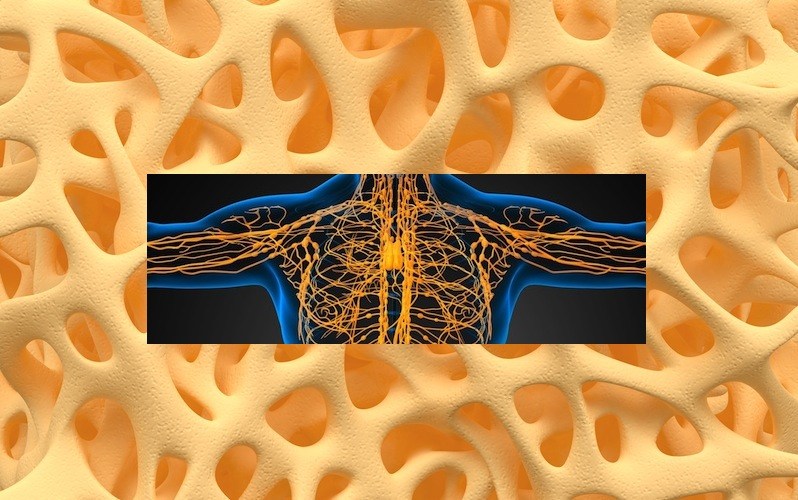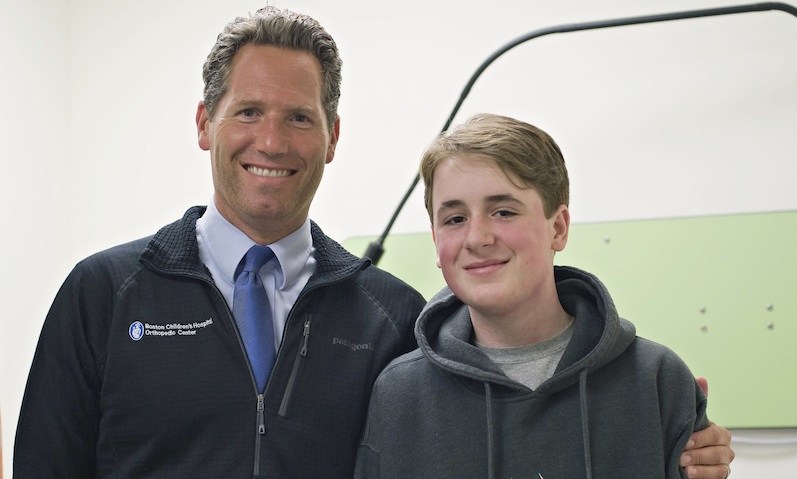Another use for mTOR inhibitors: Preserving vanishing bones in Gorham-Stout syndrome

The mTOR pathway is fundamental to nearly every cell in the body. It drives processes related to cell growth, protein production and metabolism, influencing everything from neurocognition to tumor growth. Because of this broad role, indications for drugs targeting the mTOR pathway are also remarkably broad.
Alexander Malloy, 14, is one of the first patients to benefit from a new use: curbing rapid bone loss in patients with a rare “vanishing bone disease,” or Gorham-Stout syndrome. It was discovered when Alex, who had mild scoliosis, started getting worse. To his parents’ shock, an MRI scan showed he was missing bones in his spine.
Gorham-Stout is actually the result of a rare vascular anomaly. The lymphatic vessels — whose normal function is to drain wastes and toxins from the body’s tissues — expand like tumors and multiply around the bones. This tips the normal balance of bone formation/loss into the loss column, causing bone to be resorbed and replaced with vascular and/or connective tissue.
When the spine is affected, as in Alex’s case, spinal fusion surgery can help stabilize the skeleton. But when Gorham-Stout has progressed — which can occur suddenly — orthopedic surgeons may have trouble finding good bone in which to anchor their hardware. In severe cases, the chest cavity fills with chyle, a milky fluid made up of lymph and fats carried by the lymphatic system. In addition to causing respiratory complications, the presence of chyle makes surgery more tricky and poses a risk of infection.

That’s where sirolimus comes in. It directly targets lymphatic vessel formation by interrupting mTOR signaling and has the potential to halt the destruction of bone. Interferon has been used in the past and can also work, but requires daily injections, whereas sirolimus is a twice-daily pill.
A phase II clinical trial of sirolimus in 61 patients with lymphatic malformations and other complicated vascular anomalies — including three with Gorham Stout — had shown promising results. So Cameron Trenor, MD, MMSc, director of clinical research in the Vascular Anomalies Center at Boston Children’s Hospital, offered sirolimus to Alex, pairing it with bisphosphonates to slow bone loss.
If patients are diagnosed early enough, sirolimus can prevent collapse of the spine, averting the need for spinal fusion surgery. If they do need surgery — and Alex did — sirolimus appears to reduce chyle within the tissues around the involved bones, making for a cleaner operation and a much lower infection risk.
“Without sirolimus treatment, operating on the affected area is like cutting into a wet sponge filled with chyle,” says Trenor.
Alex responded well to sirolimus, and his operation was clean. He got the green light to return to non-contact sports six weeks later. “There was no chyle at all,” says orthopedic surgeon Daniel Hedequist, MD. “This medication is a game-changer for surgery.”
Though sirolimus halts bone loss fairly quickly, rebuilding bone may take two to three years. Alex will be monitored over time with MRI scans. As his disease stabilizes, Trenor expects to take him off sirolimus, re-initiating therapy as needed if bone loss recurs.
The Lymphatic Anomalies Registry at Boston Children’s, led by Trenor, is observing patients over time to better understand this rare subset of vascular anomalies. As of April 27, the registry included 53 patients with Gorham Stout, including Alex.
Related Posts :
-

Hard and beautiful at the same time: Five lessons of raising a medically complex child
When they learned they were expecting a baby, Michelle and Stephen Strickland were delighted. The South Carolina couple looked forward ...
-

3D imaging could become standard practice in orthopedics. Here’s how.
It took a trained eye to see the abnormality on the patient’s X-ray. There, hidden behind the acetabulum was ...
-

A case for Kennedy — and for rapid genomic testing in every NICU
Kennedy was born in August 2025 after what her parents, John and Diana, describe as an uneventful pregnancy. Soon after delivery, ...
-

The journey to a treatment for hereditary spastic paraplegia
In 2016, Darius Ebrahimi-Fakhari, MD, PhD, then a neurology fellow at Boston Children’s Hospital, met two little girls with spasticity ...





